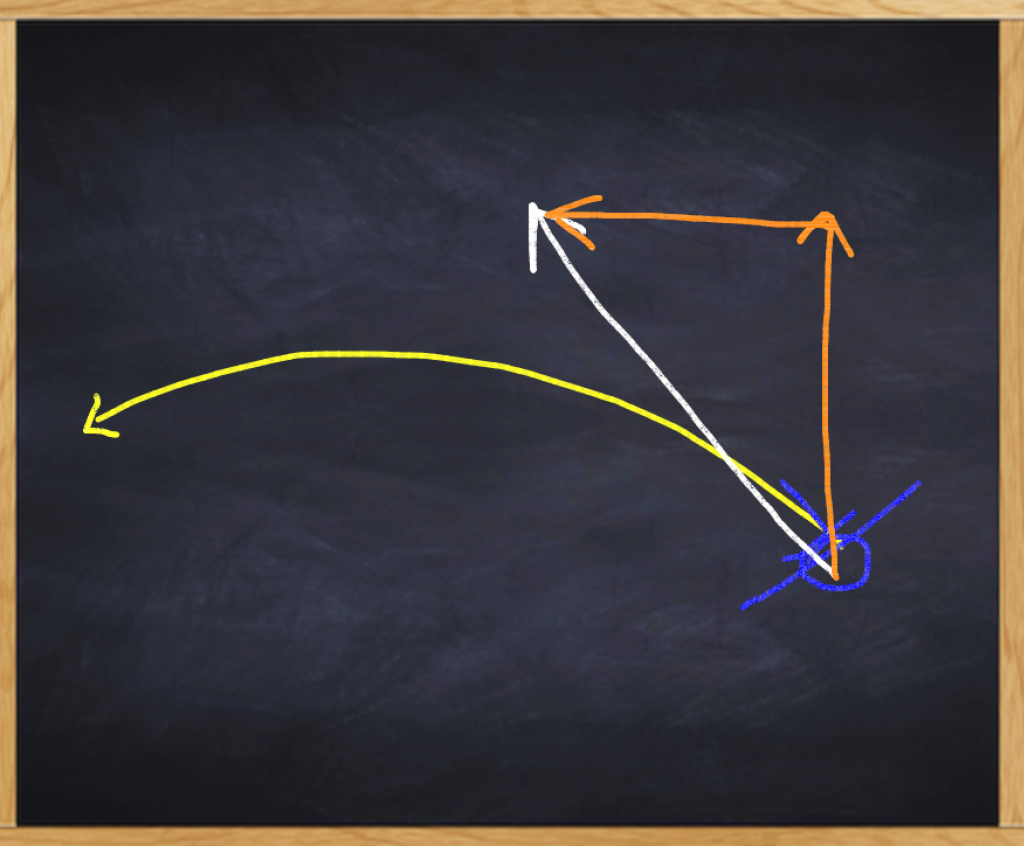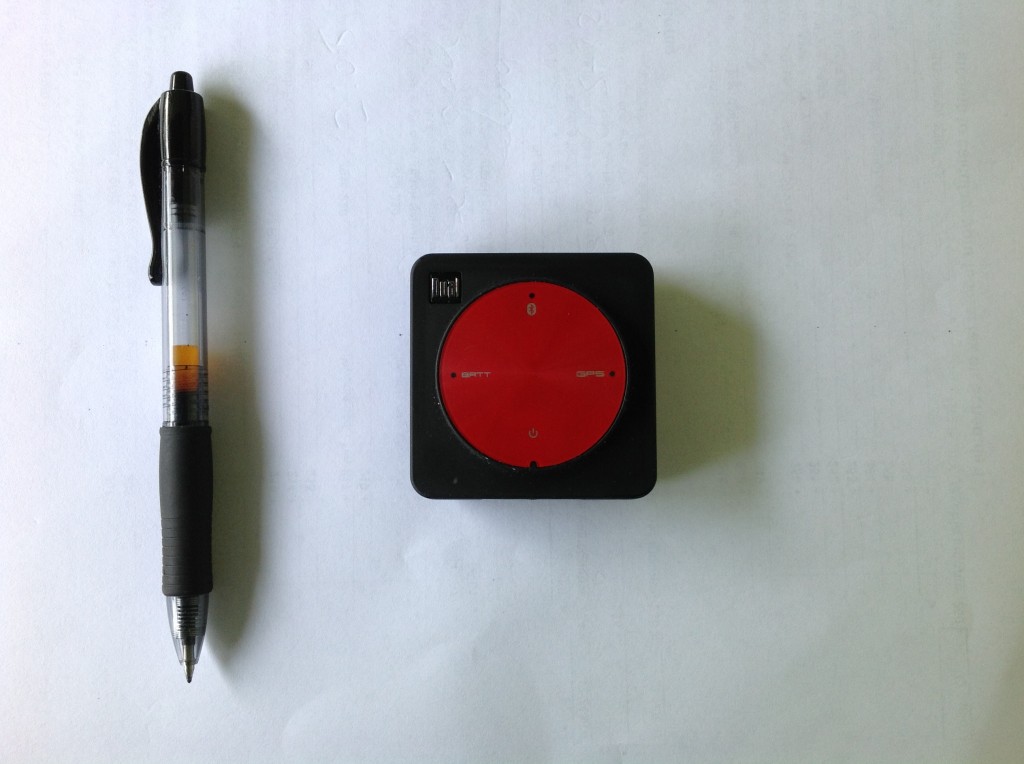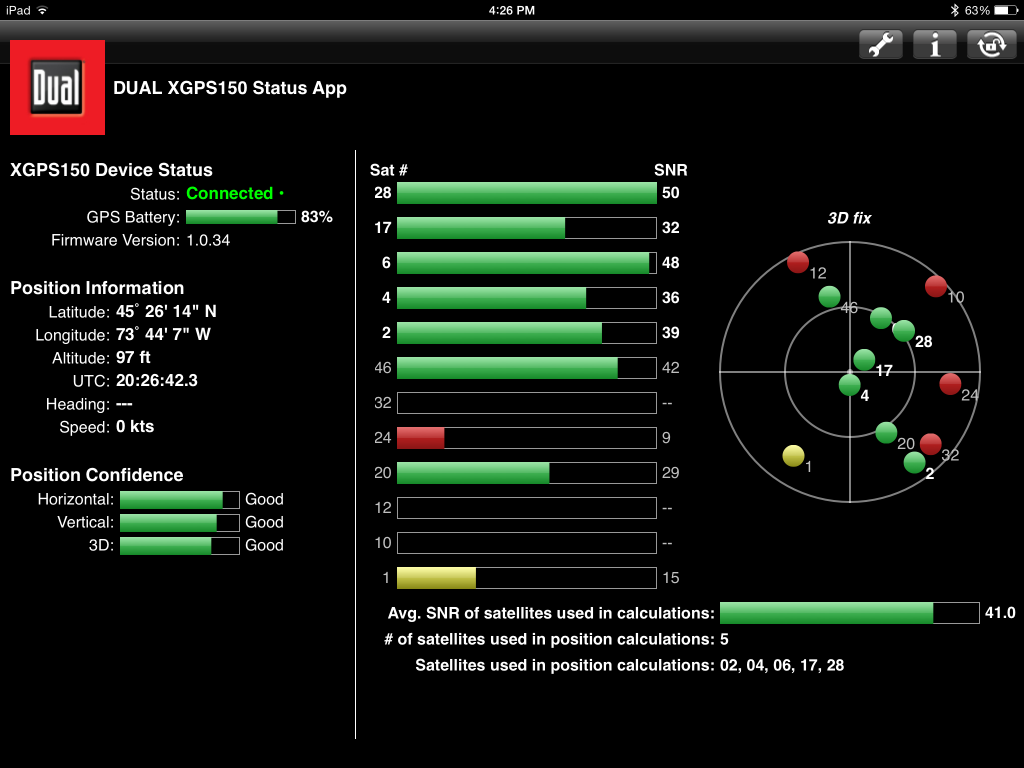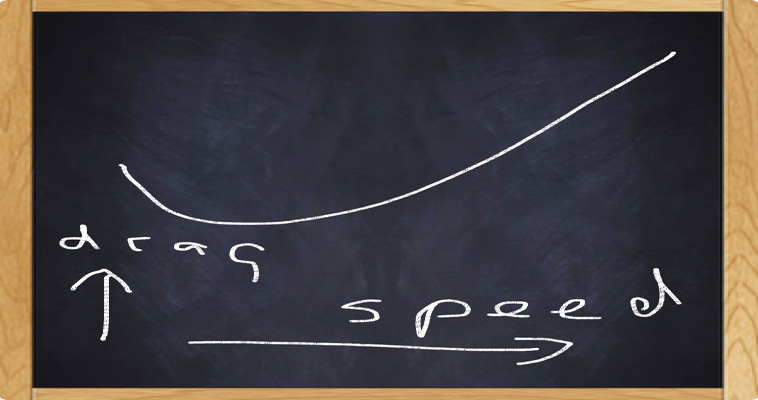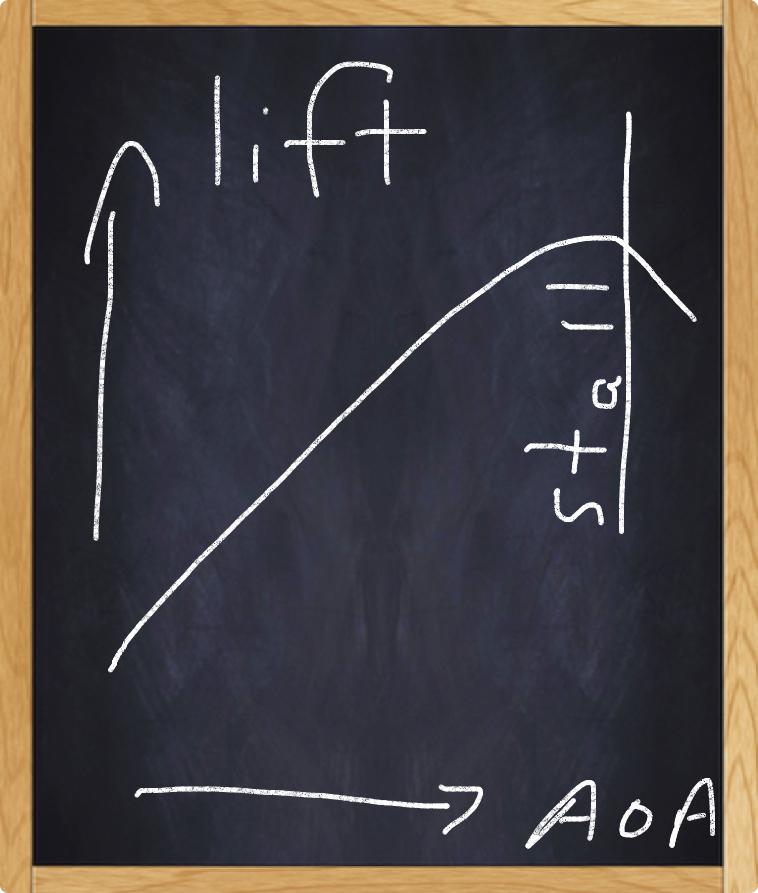document.write(" serif;">Lift
An airplane stays up in the air because the wing pushes air down. It moves forward because the propellor or the jet engine pushes air back. We know when we drop something it falls to earth. We know that it is harder to ride a bike against the wind. So the wing and the propellor are acting against those natural forces. How does it all work?
Isaac Newton lived in the 18th Century. One day he was sitting under a tree, thinking about things. An apple fell from the tree and bonked him on the head. Rather than just curse, he thought harder. Something got that apple moving fast enough to make him want to say a bad word.
Newton wasn't starting from scratch. He was born in 1642, the same year Galileo died. Galileo, in his observations of the heavens, had come up with the idea that a moving body tends to keep moving – that it takes a force to stop it or make it change direction. He called this property inertia.
Inertia was a radical idea. Nineteen centuries before, Aristotle had described how a force was required to make an object move. If the force was removed the object would stop. Galileo's observations of the planets disagreed with Aristotle. Trying to make sense of what he saw, Galileo did experiments, dropping things from the Tower of Pisa and sliding blocks down inclined planes. He observed that if he made the inclined plane slippery, the blocks would slide further before stopping. Then he used the technique Einstein called a thought experiment, and what Aristotle called a reductio ad absurdum. If there is friction between the block and the inclined plane, and if that friction can be made less (by oiling the plane, for example), what would happen if the friction could be eliminated entirely? If it were zero?
Equilibrium
Here's the part that's counter-intuitive: a flying airplane is in a state of equilibrium. Cruising along, climbing or descending – all the forces acting on the airplane are in balance. The wings are pushing air down, creating lift; this exactly counterbalances the weight of the airplane, the pull of gravity which attracts the mass of the airplane to the much larger mass of the earth. Similarly the propellor (or fanjet) is pushing air back, exactly countering the drag caused by pushing the airplane through the air at speed.
Don't be concerned if this doesn't make sense to you. Making sense of it takes time, as is evidenced by history. Aristotle made a good start, back in 330 BC or so. He knew that you had to push on a mass to make it move. He also deduced that the force required was proportional to the movement. But he didn't make that next deductive leap to inertia – that took Galileo observing the motions of the planets through his telescope. The leap is a big one, because we have to think for awhile to come up with an example from our everyday lives. But they are there nonetheless: how about a curling stone, gliding with very little friction on an alley of ice? (The weight of the stone momentarily melts the ice; the stone is gliding on a temporary film of water). That stone keeps moving for a long time. With it in mind we can almost imagine Galileo's inertia and what Newton made of it – his first law of motion.
A body in uniform motion tends to remain in motion in a straight line unless acted upon by an external force.
Again, though, it takes a curious mind, building on the achievements of others, to take that extra step: Newton asked himself, in effect, what would happen to the curling stone if the resistance of the water/ice were not just small, but zero? The curling stone would just keep moving until it hit something!
Turning
A turning aircraft is not in equilibrium. Its flight path is not a straight line, but a curve. Looking at Newton's first law, we see that there must be another force involved, being applied so as to curve the flight path. In a car, we get that force by turning the steering wheel. If we turn hard enough we are pushed toward the door or the person next to us. We can feel it in the seat of our pants or our shoulder. There is a pull against the seat belt/shoulder harness. The lateral force is generated by the tires on the asphalt. On a bicycle or motorcycle we countersteer to make the bike lean into the corner. This is more closely analogous to an airplane. But still, an airplane has no asphalt to push against. Whence cometh this force?
The largest force generated by an aircraft is the lift from the wing. Remember: in equilibrium (steady flight) lift has to be equal to the aircraft's weight. So the pilot uses lift. He tilts the lift vector by banking the airplane like a bicycle or motorcycle. The horizontal component of lift is the force that curves the flight path.
The airplane is blue. The white arrow is the wing's lift. The orange arrows are the lift divided into components so you can see how it all works. The vertical orange arrow holds the airplane up. The shorter horizontal arrow is the force causing the airplane to turn. The curving yellow arrow is the airplane's flight path.
Galileo observed the curved path of the planets and began to understand that there was a force causing the curve. Newton, still sore at the apple, saw that the force accelerating it into his head was the same force that curved the path of the planets. He proposed that masses (apple, planet earth, sun) attracted each other, and further, that the attraction was proportional to the product of the masses and inversely proportional to the square of the distance between them (F = mM/d2). It turns out Newton was right, but it was another century before Cavendish measured the force of gravity experimentally.
Lift, Again
We said that lift is produced when the wing pushes air down. Imagine that in an unthinking moment you jump from the stern of your rowboat (which you have just managed to land stern-to) to the dock. You instantly think better of it (although you are grateful you pushed off hard enough not to get wet) and look behind you. The boat is twelve feet away and still moving. That's action and reaction, Newton's third law of motion.
For every action there is an equal and opposite reaction.
Wings and propellors depend on this law. They push air down or back, and the reaction of the aircraft is to move up or forward.
How do wings push air down?
If you stick your hand out the car window at speed, you'll feel the force of the air against it. If you hold your hand flat, palm forward, your hand and arm will be pushed back. That's drag. Holding your hand palm down will produce less drag. You have made your hand into a more streamlined shape relative to the wind. Now try tilting your hand a little, holding the thumb side (leading edge) higher. You'll feel a force lifting your hand and arm up. That's lift. You could stick a one-by-six board out there and tilt it in the same way. If it wasn't ripped out of your hands, it would pull itself and your arms up to the top of the window.
The Bernoulli Digression
Stick your hand out of the window again, palm down and thumb into the wind. Now cup your hand slightly, moving your thumb down. (Your thumb is still pointing straight out, like your fingers, but your thumb, including the fleshy part in your palm where the first thumb bone is, has moved lower.) Now you will feel some lift, even without tilting your hand. By cupping your hand, you have made an airfoil shape. If you look at your hand you can see how an airfoil works. The oncoming air divides, somewhere on your thumb. It comes together again on the outside of your little finger. You can see that the air flowing over your hand follows a curve, and the air flowing under follows almost a straight line. The air flowing over your hand has further to go.
You can think of the air as 'stretching out' as it goes over the top of your hand. Many textbooks have pictures of this. The idea is that if two air particles start out together but divide at the wing leading edge, they stay above each other as they go their separate ways. Then they rejoin, arriving at the trailing edge of the wing at the same time. It is instinctive to imagine particles going over the top 'stretching out'. But if we move on to the the venturi (how a carburettor works – remember those?) the phenomenon is harder to imagine: air streaming through a tube which is constricted in the middle. The pressure in the constricted part is lower than the pressure at either end, just as the pressure on the top of the wing is lower.
Daniel Bernoulli (two generations after Newton) figured it out. He was a mathematician and described this process with equations. The equations invoked the Law of Conservation of Energy.
But we digress. It is not necessary to understand fluid mechanics to understand how an airplane flies. The Bernoulli Principle does help us make a flat board into an efficient wing. But remember that most aerobatic aircraft have symmetrical airfoils so they can fly just as well upside down. With these Bernoulli plays an even smaller part.
Basically, the wing pushes air down. That's really all you need to know.
Control
Where are we? We know the basics of why an airplane stays in the air and what makes it go. We have looked briefly at what makes it turn – we said that the pilot uses lift. But what else does the pilot do? How can he make the airplane climb and descend? Takeoff and land? Speed up and slow down?
Let's start with what makes it go straight: tail feathers. Like a bird or a dart, an airplane has weight up front and fins at the back. In the air (but not in outer space) all of these things move beak first. The heavy end of the dart with its sharp point will hit the target first (unless you're really new to the game). For slo-mo, think of a badminton bird falling with its nose toward the ground. The bottom line is that the nose points forward along the flight path (or nearly so). This is an inherent stability that kicks in before the pilot does anything.
Now imagine a small airplane. The engine, pilot and passengers are in the middle, near the front. This is where the weight is concentrated: the center of gravity. On each side the wings stick out; behind is the light aft end of the fuselage which holds the tail feathers: usually a vertical fin pointing up and a horizontal stabilizer sticking out each side. On the trailing edge of each of these surfaces are control surfaces – think of them as small wings hinged to the larger surfaces. The pilot moves these control surfaces using the stick and rudder.
In doing so he changes where the airplane points relative to the flight path. Remember “or nearly so” from two paragraphs ago? It is the pilot who chooses to point the airplane somewhere slightly different from forward along the flight path.
With the rudder pedals the pilot yaws the nose left or right. By pulling or pushing on the stick (or wheel or yoke) he pitches the nose up or down. And by moving the stick sideways (or turning the wheel or yoke) he moves the ailerons (on the trailing edge of the wing tips) and rolls the airplane left or right, banking like a motorcycle.
There is a fourth basic control: the throttle or thrust lever. With this the pilot controls how much air the propellor or fanjet pushes back. You can think of this as how much energy is being added to the system. That is the basics of it. Yes, when you push the throttle forward you are producing more thrust, so the airplane will climb or go faster until the increasing drag equals the thrust. If you pull the throttle back there will be less thrust and the airplane will slow down or descend, or both. But in each case you are adding more or less energy to the system.
Gliders
Wait, you say. How can a glider fly without an engine? Where does the energy come from?
The short answer is: from the winch, the tow plane, or the rising air in thermals. But if we want to think this through, we might also want to ask, where does the energy go?
Like most objects, an airplane can have kinetic energy, the energy arising from movement. Also like other objects it can have potential energy, which depends on its position in space. To simplify and make it more intuitive, we can limit the argument to its position relative to the earth. Is it on the ground or in the air? Like a ball or a case of beer, it takes energy to lift an airplane, to separate it from the surface of the earth. That energy is still there, as it is in a roller coaster rolling slowly over the top of the high point of the track.
Drop the ball and it will bounce. Drop the beer and you might have to go buy some more. But the roller coaster rolls over the top and down, accelerating as it descends, trading potential energy for kinetic energy. So it is with a glider or an airplane. Altitude above ground is potential energy. If the pilot uses the controls to select a descending flight path, that energy can be used as both lift and thrust – just enough thrust to keep the airplane at a good flying speed. That's a glide, and both airplanes and gliders can do it.
Some of you bright stars might say, wait – what about the Law of Conservation of Energy? If the airplane glides down and lands and rolls to a stop, it has no more energy. Where did it go?
The answer is: into thin air. Remember drag? Riding a bicycle into the wind? There is a lot of air out there so you don't notice it, but when you ride or run or even walk through the air you are expending energy to overcome the resistance of the wind and in doing so you are heating up the air! Friction, drag: they generate heat. Think of rubbing two dry sticks together.
Navigation
Imagine you are lazily watching a twig drifting down a placid stream. It is a peaceful scene. You are relaxed and your perception does its work. You sense the twig's slow movement from right to left.
Now imagine taking a movie (OK, a video) of the same scene. You take your camera home and open up the video in your editor. You look at it frame by frame. All the frames look exactly the same, except . . . yes! If you look closely the twig changes position. Not much from one frame to the next, but after say, a minute, it has moved almost across the frame. The twig is moving! It is changing position. It is drifting lazily downstream, moving with the water. It is moving slowly, at least relative to us on shore. We say it has a speed. But we also know it is moving downstream, from our right to our left. So it has not only a speed but also a direction, right to left . That combination of speed and direction is called velocity. Mathematically it is known as a vector.
Why are we talking about twigs?
Well, our airplane is a twig. It moves through the air that drifts over the surface of the earth. It was the same in the days of the square-rigged ships. Out of sight of land for months at a time, they moved by grace of the wind through currents and tides that had their own movement. To figure out where they were sailors used a sextant to find the elevation of the sun, moon and stars. They also used Dead Reckoning to calculate a new position from a known position (fix). We could do that with our twig if we knew the speed of the current in the stream. If the current flowed at one mph, for example, we could figure that if the twig is here now, then in an hour from now (barring mishaps) it will be a mile downstream.
Newton, Again
Isaac Newton developed the mathematics we still use for navigation today. (Leibniz did the same thing independently). It is called the calculus and is every math student's nightmare. I made it through second-year calculus with a D average. Nevertheless the elementary calculus that relates to airplanes (and ships and space-ships) has remained with me and been of enormous usefulness.
Basically Newton found a way to precisely quantify motion, even though speeds and directions might change. If he knew where the stream flowed, and at what speeds and directions through the rapids, over the falls, and eddying through the pond below the falls, he could calculate precisely where the twig would be at any moment. He did this by a process analogous to our video of the twig: if you shot the video in slow motion (many frames per second) you could analyze the motion of the twig with great accuracy. In effect, what Newton and Leibniz did was the ultimate slow motion: an infinite number of frames per second.
GPS and INS and IRS
At the end of the last century, GPS suddenly became a reality. A tiny receiver can listen to signals from satellites circling the globe and calculate a position on (or above) the surface of the earth to within a few meters. Here is a photo of the GPS Receiver I use with my iPad in the Bonanza:
You can see how small it is – that's my pen next to it.
The GPS stores these positions (this is like the frames of our twig video) and then uses the calculus to find speed and direction. The process is called differentiation and is what our perception does as we lie on the bank of the stream watching the twig. It is how we perceive motion.
When I retired from airline flying (2004) only a few of the airplanes had GPS, and we flew no GPS approaches to find airports on cloudy days. Instead we used ADF and VOR and ILS, which send signals from ground-based stations.
Here is what my GPS was seeing while I stood on my back porch:
I was standing still, so my speed was zero and I had no heading. (Actually I was looking south, but the GPS can't tell that until I start to move.)
Today in the Bonanza I use almost nothing but GPS. Using it I can fly an approach in cloud down to 300 feet above the runway.
When I was still flying airliners we used INS (and later the more accurate IRS) for our enroute navigation. These use Newton's calculus going backwards: they sense accelerations in three dimensions and calculate speed and position from there. Imagine riding a roller coaster with your eyes closed. (Those with delicate constitutions are excused). First you feel heavy, then you feel light. You know you are speeding up and slowing down. (It helps if you don't move your head.)
Your perception is recording those accelerations and correctly deducing that your speed is changing. This is the reverse of differentiation: it is called integration. Newton's mathematics lets us go back and forth from position to velocity to acceleration.
|
||||||||||||||||||
Summing Up
An airplane flies because it has a wing that pushes air down and a propellor that pushes air back. The pilot has controls that can change how the airplane points relative to the flight path. That in turn influences the flight path itself – for example, the pilot makes the airplane turn by rolling into a bank, aiming the lift of the wings so that some of it is pulling toward the inside of the turn, curving the flight path. He can also add more energy to the system by pushing the throttle forward. Or he can throttle back and glide.
To navigate the pilot can look out the window for landmarks and use the compass and clock. Or she can use GPS. The best answer is to do both, because batteries can go dead.
The Future
If it makes you feel good to think about this stuff, I have great news: there's lots more! In fact it seems that the more interested you get, the more there is to discover. And if aviation turns out to be your thing, have no doubt that you will be needed. Because if flying through the air uses too much fuel some day, we will still need to get into orbit and fly around from there.
Flying in space will take even more mathematics (orbital mechanics, for a start). And here's another problem: Newton's laws (and his calculus) are deterministic. That means you can go back and forth, as we did in the table above. And if you take his equations to their logical conclusion, you can go back and forth in time, and everything that was and will be has already been determined.
But we no know that's no so, or not quite. If things get very small, so small they can't be divided – for example, a photon of light – they behave differently from the objects we know. Then we use another math: quantum theory. (Stand by, because you young people will see quantum computers in your lifetimes). If things get very big, like galaxies, or if we try to accelerate a space-ship to the speed of light, then we have to use Albert Einstein's Theory of Relativity.
And don't let anyone tell you pilots won't be needed. Remember Chewbacca, the Wookie pilot from Star Wars? He took the Millennium Falcon to warp speed by hand. Computers are going to be a big help, but in a way they give us more to learn. So if you love to fly you'll have to learn flying and math and computers and navigation in space and . . .
But that's just more fun!

